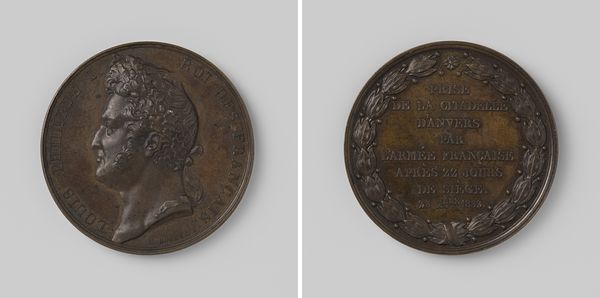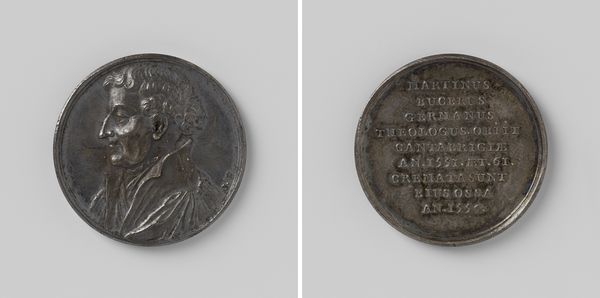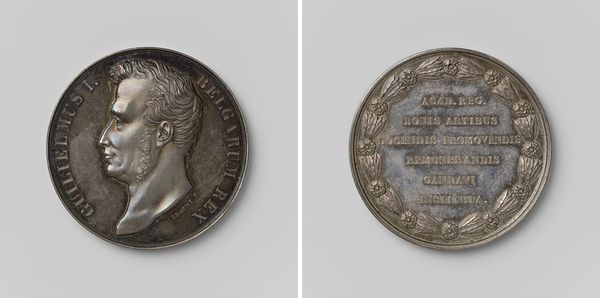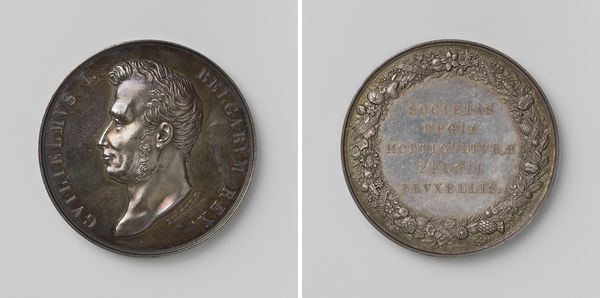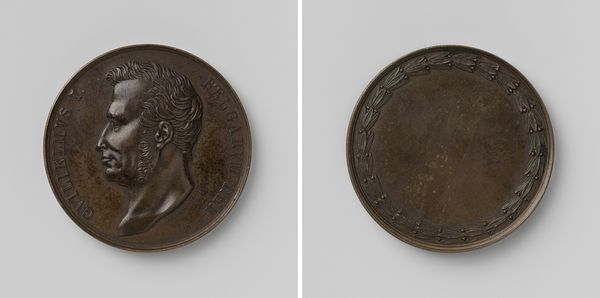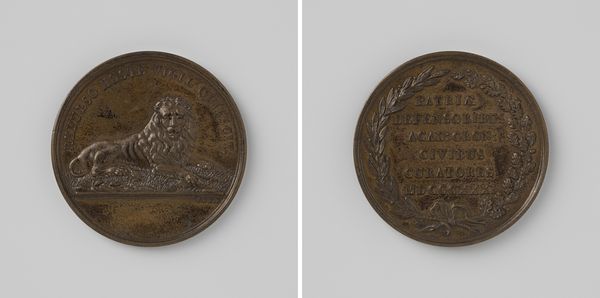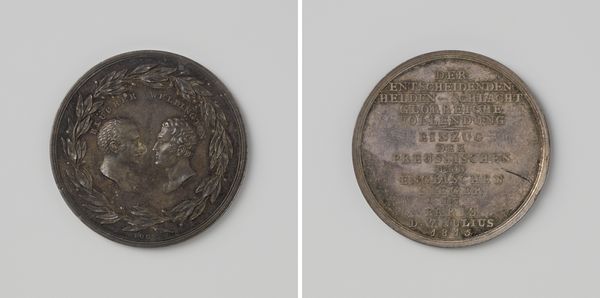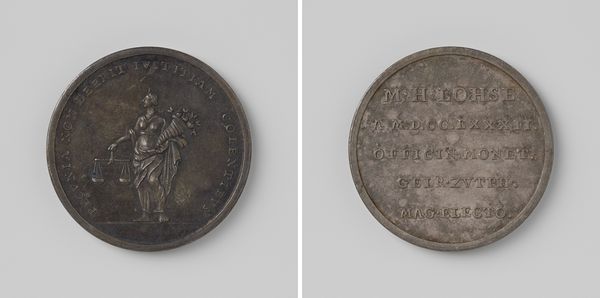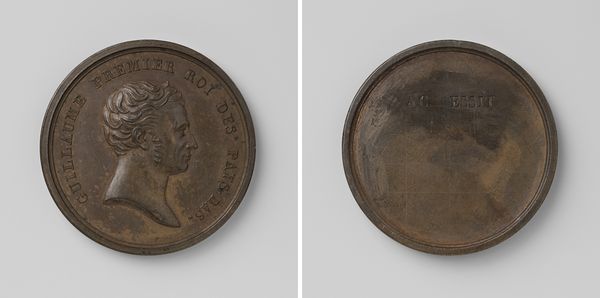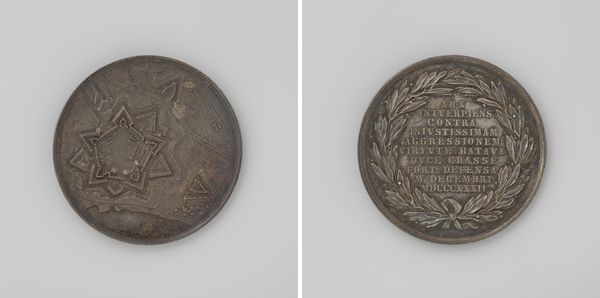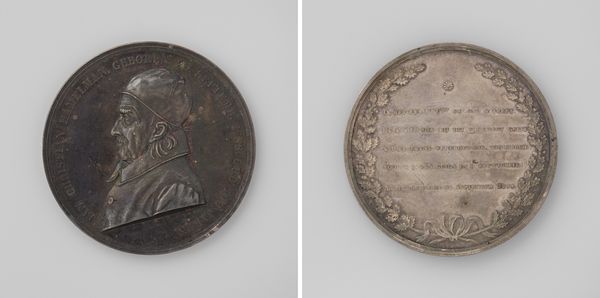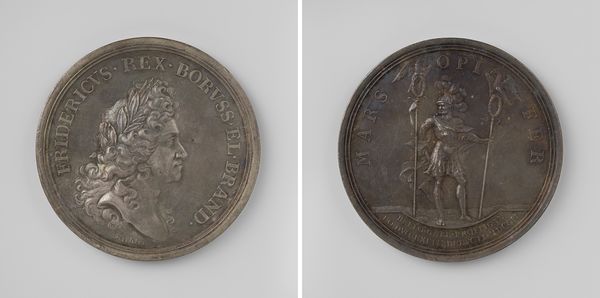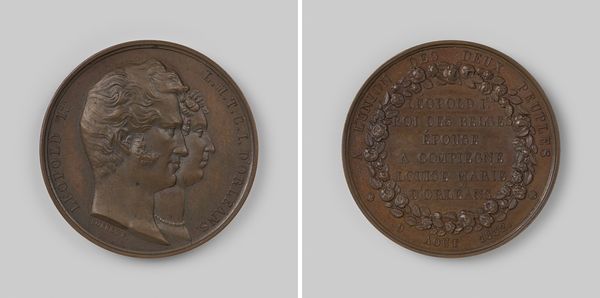
Stichting van de Koninklijke Academie van Beeldende Kunsten te Brussel, ter ere van Willem I Frederik, koning der Nederlanden 1817
0:00
0:00
metal, relief, bronze, sculpture
#
portrait
#
medal
#
neoclacissism
#
metal
#
sculpture
#
relief
#
bronze
#
sculpture
Dimensions: diameter 5 cm, weight 427 gr
Copyright: Rijks Museum: Open Domain
Curator: It's fascinating how medals like this one, commemorating the founding of the Royal Academy of Art in Brussels in 1817, act as miniature time capsules. Editor: It’s beautifully cast, I have to say. Even at this scale, there’s something grand and self-assured about it; an assertion of civic pride perhaps? Curator: Exactly! Created by Joseph-Pierre Braemt, it represents more than just an art school’s beginning. It symbolizes King William I’s effort to establish a modern cultural landscape under Dutch rule, after the fall of Napoleon. Editor: You can really see that classical influence; the bust is distinctly Roman in its idealization. Was this a common style for portraying rulers at the time? Curator: Very much so. Neoclassicism was the visual language of authority and enlightenment then. Notice how King William's profile dominates one side, inscribed with his name and title in Latin – a direct nod to Roman imperial coinage and portraiture traditions, signaling stability. Editor: The other side, with its Latin inscription celebrating the academy and its dedication to teaching the fundamentals of graphic arts, framed by this detailed wreath… It really speaks of aspirations of artistic and intellectual prowess, like a modern renaissance emerging. Curator: I see it as part of the wider phenomenon where rulers understood and used visual media – architecture, paintings and sculpture and certainly medals like this one – to embed narratives of legitimacy and continuity into the minds of people. This wasn’t only a boost for arts education but a powerful piece of royal public relations, skillfully blending national pride with artistic promise. Editor: Yes! It's like holding a piece of carefully crafted history in your hand – propaganda maybe, but wonderfully designed. It offers us a vivid window into how power communicated and perpetuated itself at that specific moment. Curator: Precisely. These objects remind us that artistic endeavors rarely exist in a vacuum. Understanding their political and social backdrop deepens our grasp of their lasting legacy and cultural significance. Editor: Absolutely. It reveals that the arts have always served diverse purposes; both beautiful and useful.
Comments
No comments
Be the first to comment and join the conversation on the ultimate creative platform.
